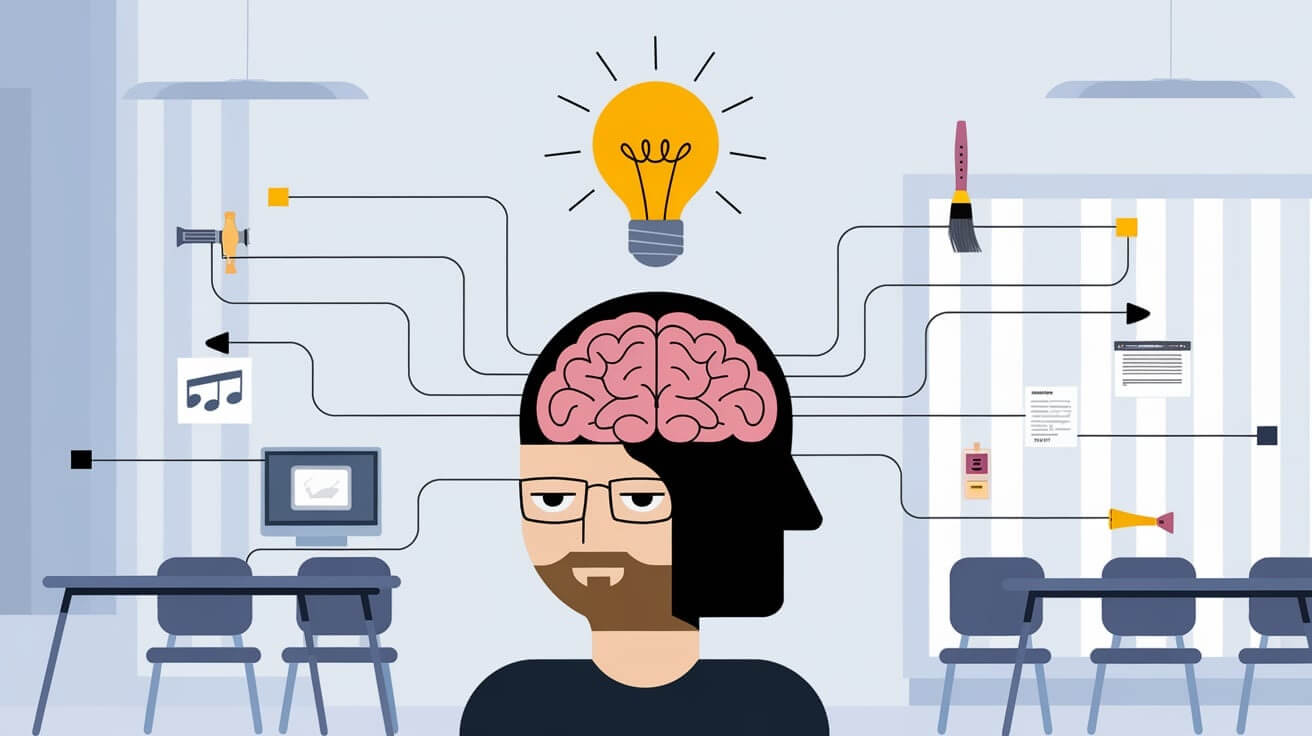
Introduction
Have you ever paused to think about the skills you've developed over the years? These might be from your career, education, hobbies, or everyday life. Often, we overlook how these abilities—called transferable skills—can help us adapt to new opportunities, particularly when changing jobs or industries.
Why is this important? Many people feel stuck in their careers because they believe their expertise is too specific to their current job. But here's the reality: transferable skills allow you to break barriers, expand your opportunities, and stand out as a versatile professional.
This article will explore transferable skills, why they're valuable, and how to identify and showcase them effectively. By the end, you'll have practical strategies to confidently highlight these skills in your resume, cover letter, and interviews.
What Are Transferable Skills?
You can apply transferable skills across various roles, industries, and personal situations. Unlike job-specific skills, which are tied to a particular profession or task, transferable skills are versatile. They reflect your adaptability and capacity to excel in different environments. Whether you're shifting careers, re-entering the workforce, or seeking a promotion, these skills allow you to bring value to any situation.

Why are they important?
Transferable skills highlight your potential to contribute beyond technical expertise. Employers value candidates who can navigate diverse challenges, collaborate effectively, and adapt to change. These skills demonstrate your professional flexibility and make you a strong contender in competitive job markets.
Examples of Transferable Skills
Soft Skills
Soft skills are interpersonal abilities that influence how you interact and collaborate with others. They are critical for team-based environments and roles that require communication. Examples include:
-
Communication: Presenting ideas, active listening, and tailoring your message to the audience.
-
Problem-solving: Analyzing challenges, thinking creatively, and implementing practical solutions.
-
Teamwork: Cooperating with diverse teams, resolving conflicts, and achieving shared goals.
-
Leadership: Motivating and guiding teams, making decisions, and managing resources efficiently.
Hard Skills
Hard skills are technical or job-specific abilities that can be quantified or taught. They often complement soft skills to make you an all-rounded professional. Examples include:
-
Project Management: Planning, executing, and delivering projects within scope and deadlines.
-
Data Analysis: Interpreting complex data to make informed decisions.
-
Technical Proficiency: Mastery of software, tools, or systems specific to a role.
Life Skills
Life skills are broader competencies that impact both personal and professional effectiveness. They are highly relevant in managing responsibilities across different contexts. Examples include:
-
Time Management: Prioritizing tasks to maximize productivity.
-
Conflict Resolution: Handling disputes diplomatically to achieve positive outcomes.
-
Creativity: Generating innovative ideas and solutions.
Why Transferable Skills Are Valuable

Transferable skills are the cornerstone of career growth and adaptability in an ever-changing job market. These abilities increase your professional value and open doors to new opportunities, allowing you to succeed in diverse roles and industries.
Career Flexibility
One of the most significant benefits of transferable skills is their ability to provide career flexibility. Whether you're shifting industries, exploring a new role, or starting a second career, these skills ensure you don't have to start from scratch. Instead, they allow you to build on your expertise and apply it in new contexts.
Example:
A teacher transitioning to corporate training can successfully leverage their communication skills to design engaging workshops and their organizational abilities to manage training programs effectively. These core competencies make the shift seamless, proving that skills acquired in one field can thrive in another.
Relevance in Today's Job Market
The modern workplace prioritizes adaptability. Employers are no longer individually focused on technical expertise but increasingly prioritize candidates who demonstrate potential and flexibility. Transferable skills—problem-solving, leadership, and teamwork—signal your ability to thrive in dynamic environments.
LinkedIn Learning's 2023 Workplace Report shows that 75% of hiring managers value transferable skills more than technical qualifications. This trend highlights how businesses are prioritizing long-term potential over immediate job-specific expertise.
Improved Job Prospects
Transferable skills give you a competitive edge in the job market. They showcase your ability to handle diverse responsibilities, solve problems effectively, and adapt to new challenges. Employers see these qualities as indicators of your readiness to contribute broadly to an organization.
How to Leverage This:
Highlight transferable skills in your resume and during interviews by connecting them to the job's needs. Demonstrate how these abilities enable you to excel in new environments.
Steps to Identify Your Transferable Skills
Step 1: Self-Assessment
Start by reflecting on your experiences:
-
What tasks have you excelled at?
-
What achievements are you proud of?
-
What feedback have you received from colleagues or supervisors?
Practical Exercise:
-
Write down five key accomplishments from your past roles or activities.
-
Identify the skills you used to achieve them.
Example: Coordinating an event may highlight planning, budgeting, and communication skills.
Step 2: Mapping Tools for Skills
Leverage online tools to organize and visualize your abilities:
-
LinkedIn Learning: Offers courses to identify and build on your strengths.
-
Career Aptitude Tests: Provide insights into your skills and potential career paths.
-
Skills Mapping Worksheets: Categorize your abilities into transferable and job-specific skills.
Pro Tip:
Use a mind map to see how different skills connect and support one another.
Step 3: Feedback from Others
Ask for input from people who know your work:
-
Peers and Supervisors: Their observations can provide clarity on your strengths.
-
Mentors: They can help you connect your skills to career goals.
-
Clients or Customers: Their feedback often highlights interpersonal and problem-solving abilities.
How to Showcase Transferable Skills
Effectively showcasing your transferable skills is critical to making a strong impression on potential employers. Whether crafting a resume or preparing for an interview, how you present these skills can significantly influence your chances of success. Here’s how you can strategically highlight them.
On Your Resume
Tailoring your resume to emphasize transferable skills is essential for standing out. Employers often scan resumes quickly, so presenting your skills clearly and targeted is crucial.
How to Format:
-
Include a "Skills" Section
Create a dedicated section near the top of your resume to showcase transferable skills that align with the job description. Use concise bullet points to list key skills, such as communication, project management, or data analysis. -
Integrate Skills into Job Descriptions
Instead of listing responsibilities, focus on accomplishments that demonstrate your transferable skills. Use action-oriented language and quantify results where possible.-
Example: "Managed cross-functional teams to deliver projects on time and within budget, improving efficiency by 20%."
-
Tips for Success:
-
Match your skills with the keywords in the job posting to ensure relevance.
-
Highlight universal skills that apply to teamwork, leadership, and adaptability.
In Interviews
Interviews allow you to bring your transferable skills to life through real-world examples. Prepare specific scenarios demonstrating how you’ve applied these abilities in past roles.
How to Use the STAR Method
The STAR method helps you present your skills in a structured and impactful way:
-
Situation: Set the stage by describing the context of a challenge or project.
-
Task: Explain your role and the objective you need to achieve.
-
Action: Detail the steps you took to address the situation or complete the task.
-
Result: Highlight the outcome, emphasizing measurable results if possible.
Example:
"In my previous role, I led a team 10 to streamline communication between departments. The situation involved frequent project delays due to miscommunication. I created a centralized communication platform and established weekly alignment meetings, reducing delays by 15%."
Why It Works
-
Resumes: Formatted and targeted resumes make it easy for recruiters to see your potential.
-
Interviews: Using the STAR method shows employers how your transferable skills can solve problems and deliver results in their organization.
Common Myths About Transferable Skills
Myth: Transferable skills are less important than technical skills.
Reality: While technical skills are crucial, employers often look for candidates who can adapt and work well with others.
Myth: You need to master every transferable skill.
Reality: Focus on a few core skills that align with your career goals.
Real-Life Examples of Transferable Skills
From Hospitality to HR
- A restaurant manager transitioned to HR by leveraging customer service, problem-solving, and team management skills.
From Education to Corporate Training
- A teacher moved into corporate training, using their skills in communication, curriculum development, and public speaking.
From Creative to Marketing
- A graphic designer used creativity and project management skills to excel in marketing.
Expert Insights and Research Data
- HR Specialist Insight: "Transferable skills demonstrate a candidate's ability to grow and adapt, which is invaluable in a dynamic workplace."
Data:
-
-
65% of hiring managers see transferable skills as indicators of growth potential.
-
Highlighting transferable skills increases your chances of being shortlisted for interviews by 20%.
-
Key Takeaways
-
Transferable skills are essential for career adaptability and growth.
-
Regularly assess your skills and seek feedback.
-
Showcase these skills in resumes and interviews with relevant examples.
-
Remember, identifying transferable skills is an ongoing process that evolves with your career.
Frequently Asked Questions (FAQs)
-
What are the most sought-after transferable skills?
-
Communication, teamwork, adaptability, and leadership.
-
-
How can I identify my transferable skills?
-
Reflect on past experiences, use tools like skills mapping, and seek feedback.
-
-
Are transferable skills enough for a career change?
-
While they're crucial, pairing them with technical skills can make you a stronger candidate.
-
-
What tools can help me identify transferable skills?
-
LinkedIn Learning, career aptitude tests, and mentorship programs are great resources.
-
-
How do transferable skills help in career growth?
-
They enable you to adapt to new roles, stand out in applications, and succeed in diverse environments.
-
Conclusion
Identifying your transferable skills isn't just about career growth—it's about recognizing your value in any situation. By reflecting on experiences, seeking feedback, and leveraging tools, you can uncover abilities that make you a versatile and sought-after professional.
Start today by listing your accomplishments and matching them to the skills you used. From there, you can confidently present yourself as a candidate ready to succeed in any role or industry.
Life Skills Transferable Skills




